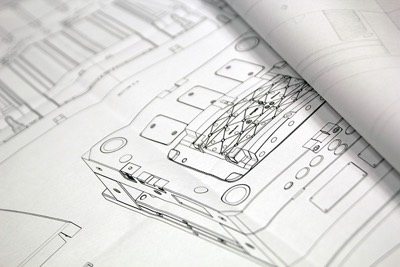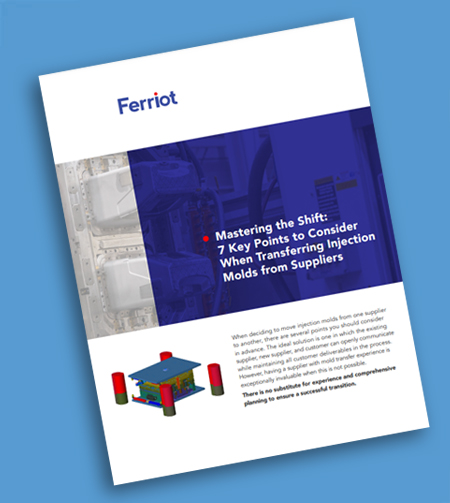 Decorative metallic coatings allow plastic parts to function as lightweight, economical alternatives to metals in a variety of applications (i.e. automotive, appliance, business machines, etc.). One such process is electroplating, which provides a high-quality, durable finish to plastic. Today, plating grades of ABS and PC ABS meet the stringent performance requirements of automotive and appliance applications.
Decorative metallic coatings allow plastic parts to function as lightweight, economical alternatives to metals in a variety of applications (i.e. automotive, appliance, business machines, etc.). One such process is electroplating, which provides a high-quality, durable finish to plastic. Today, plating grades of ABS and PC ABS meet the stringent performance requirements of automotive and appliance applications.
This article focuses on two important front end processes, plastic part design and injection molding specifically for electroplating. Both significantly influence the success when plating a plastic part.
Part Design
Let’s begin by talking about plastic part design and what should be considered when designing and building a plastic injection mold. Keep in mind, that defects on highly cosmetic surfaces will be more pronounced after electroplating. Following best design practices will help optimize the appearance and keep rejects at a minimum:
- Plastic parts should be designed as a single piece construction versus bonded together.
- Rack tabs should be designed into the part to secure the part on the plating racks without flexing it when traveling through the various cleaning, rinsing and plating cycles. Where a part is racked, it will not have metal coverage. Rack tabs must be stiff enough to resist flexing.
- Gates should be located on non-critical surfaces (out-of-sight) and are typically larger than for conventional non-plated applications. If gates must be removed, trimming the gate(s) cleanly is important to prevent sharp or ragged edges after plating.
- Wall thicknesses associated with strengthening ribs and attachments points should be sized so they don’t create a visible sink mark after plating.
- Part edges and corners should be rounded off to avoid undesirable plating build-up.
- Parting lines should be properly maintained over the life of the mold and located in non-critical appearance areas to prevent sharp or ragged edges that could be exaggerated by the plating process.
- Avoid blind holes and slots that may retain chemicals during immersion in the various cleaning, rinsing or electroplating steps. Part features must allow solutions to adequately drain between each phase.
- Facilitating part ejection without the use of mold releasing agents, especially silicone, is an absolute must for good adhesion after plating. Molds must be highly polished to both facilitate ejection and eliminate unsightly machine marks.
- It is also extremely important to make sure all rust inhibitors and oils are removed before molding parts. Self-lubricating mold components are often used to prevent contamination.
Injection Molding for Electroplating
These key points discuss how to best optimize the injection molding process for improved plating adhesion and end-use performance:
- High molded-in stresses have a negative effect on surface adhesion resulting in unsightly defects such as cracking and blistering of the plated part. Stresses are typically elevated at gate locations so placing them out-of-the line of sight is an important consideration.
- To minimize these stresses, platable resin compounds are typically processed at high melt and mold temperatures with longer fill times and lower injection pressure than conventional molding.
- Residence time of the resin in the injection barrel is also a factor. Too much residence time tends to degrade the resin and affects the ability to plate the plastic successfully.
- Proper drying of the resin is also an important factor. Resin should be properly dried such that the moisture content is within the acceptable range as set by the manufacturer. Improper drying could lead to blisters and other moisture-related surface defects after plating.
- Absolute cleanliness in the injection molding process is essential. The area around the molding machine, the mold itself, ancillary equipment and/or fixtures and gauges need to be free from oil, grease and other contaminants.
- Finally, while handling the plastic parts, wear proper gloves to reduce fingerprints which can leave an oily film on the part and lead to reduced adhesion in those areas. Immediately place the molded part into a protective bag and container to protect it during transport.
There are many subtle nuances to proper processing of plastic parts to be electroplated. Ferriot has many years of experience in the molding, decorating and assembly of plastic products and understands the steps necessary to insure success in producing electroplated plastics.




